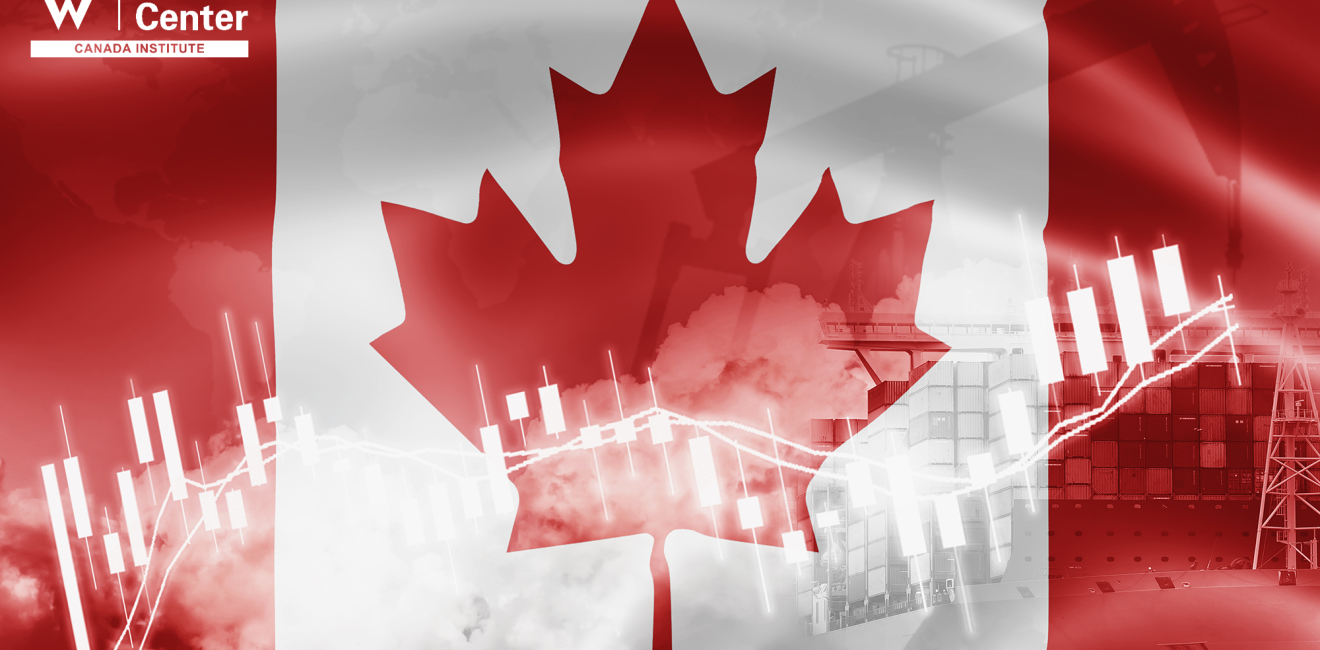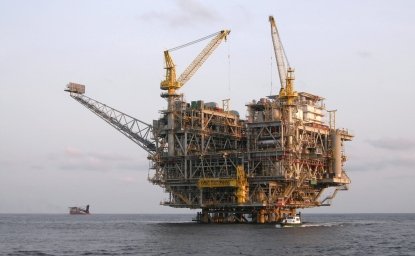Canada’s oil producers have been grappling with a lack of transportation, access to markets, and limited storage capacity, which the Alberta government managed through a production curtailment order for 2019 that remains in effect. Yet in recent weeks, global oil market turmoil has had relatively less impact on the Canadian oil patch because of its isolation. The paradox is that the short-term benefit of insulation from global market price volatility underscores the long-term problems for Canadian oil that today is sold at a discount in the United States.
With the rapid spread of COVID-19 decreasing oil demand around the world and a coinciding market share war, oil prices descended to 18-year lows last month and have yet to stabilize.[1] Canada’s benchmark Western Canadian Select (WCS) started March at $33.73 pb and proceeded to plummet.[2] As of April 28, WCS has not experienced the volatile crash into negative prices seen south of the border on April 20, but it has languished in single digit prices, below other world oil prices, with its discount. In the last month, WCS rose above $10 pb twice.[3]
Oil prices are not like other commodity prices around the world because they do not hover around daily production costs. Oil prices vary slightly by type of oil and transportation costs, but they are predominantly based off demand and supply cues from global markets. With low and uncertain demand, oil sellers have become oil stockpilers. Moreover, in an U.S oil storage shortage, the negative prices of Western Texas Intermediate (WTI), North America’s oil benchmark, on April 20 reflected a first panic as U.S. oil sellers and traders competed for buyers by paying them to avoid paying for indefinite storage.
In Canada, the oil sector’s environmental, social, and economic impact have pervaded conversations across the country over the past year, and the October 2019 federal election gave Prime Minister Justin Trudeau a minority government, with which he pledged to address climate change aggressively.
Limited pipeline and problematic rail capacity as well as a lack of oil storage led the Alberta government to impose a production curtailment in 2019, which continues today with production capped at 3.81 million bpd.[4] Meanwhile disagreements over the progress of transportation construction has thrown Canada into social conflict, from nationwide railroad blockades to calls in Alberta and Saskatchewan for the provinces to leave Canada’s federation.
This year, the oil industry has also faced another deep shock: low demand as COVID-19 shuts down oil intensive activities, such as driving and flying. On February 10, Finance Minister Bill Morneau warned the sector that the 15% dip in Canada’s oil prices since the outbreak was a small foreshock of future demand.[5] COVID-19 had its devastating start in China. Although the United States is the world’s top oil consumer, China is notably the world’s top oil importer. In 2019, the world consumed 100 million bpd and China consumed 13.0 million bpd, importing 10.1 million bpd.[6] Canada does not supply oil to China, but as world oil prices move up and down together, Canada’s oil price has trended downward alongside international oil prices.
OPEC and OPEC+’s Oil Curtailment
As of March 6, Canada’s oil producers are now experiencing the additional shocks of the oil war, and its aftermath, between Russia and OPEC’s unofficial leader Saudi Arabia over the breakdown of an OPEC production curtailment. OPEC’s 14 member countries control 40% of the world’s oil production and 60% of global oil exports.[7] They have been curtailing their oil output since 2016 to raise world oil prices, but not alone. They joined forces with Russia, Mexico, Malaysia, Kazakhstan, Oman, South Sudan, Sudan, Brunei, Bahrain, and Azerbaijan to form OPEC+, or the Vienna Group. OPEC+ agreed to curtail oil by 1.2 million bpd, and as of January 2020, OPEC+ curtailment was at almost 1.7 million bpd.[8]
OPEC+ includes 23 of the world’s approximately 100 oil-producing nations. The 13 additional non-OPEC members are important because they agreed to reduce their output and lessen the average reduction burden, but moreover, they also promised not to increase their output. Production restrictions lifts oil prices as it decreases market oil supply. High prices normally incentivize countries to produce more oil, which over time undermines OPEC’s reduction efforts. The more nations curtailing their oil production, the more effective curtailment is at keeping world prices raised.
Over the years, OPEC+ has faced opposing pressure from the United States and non-OPEC+ countries. In North America, between 2016 and 2018, the United States increased its oil production from 8,839,000 bpd to 10,990,000 bpd and Canada increased its oil production from 3,890,000 bpd to 4,530,000 bpd.[9]
Saudi Arabia-Russia’s Price War: What happened?
Russia has been a surprising contributor to OPEC+. When they first joined, they set their output reduction goal at a generous 300,000 bpd.[10] However, Russia’s relationship with OPEC has been difficult because Russia has spare capacity to increase its production and needs oil revenue while its economy struggles under U.S. economic sanctions. Saudi Arabia and Russia are also both powerful oil market players with large oil reserves and outputs. Conspicuously, Saudi Arabia and Russia are respectively the world’s 4th and 5th largest holders of foreign currency reserves, with a market shock defense of about half a trillion dollars each.[11] The two countries are natural competitors and make odd allies.
On March 6, 2020, in response to the sharp drop in oil demand due to travel restrictions imposed to slow the COVID-19 pandemic, OPEC met with its non-OPEC members to agree to increase curtailment by 1.5 million bpd with Russia’s agreement and reevaluate measures in June.[12]
At the time, China had over 30,000 active COVID-19 cases.[13] Fifteen countries supply 90% of oil sold to China, eight of which are OPEC members.[14] In 2019, 16.8% of China’s total imported oil came from Saudi Arabia, followed by Russia at 15.3%.[15] Even with the global demand uncertainty, Russia decided to end participation in the OPEC+ curtailment.
Leaving OPEC+ meant Russia was free to return to normal production levels and increase them as OPEC continued to curtail its oil. In response, Saudi Arabia promptly ended its oil restrictions, dropped its prices to $25 pb, and promised to increase its oil output from 9.7 million bpd to 12.3 million bpd come April, in order to flood the market and go after world market share.[16] Russia then changed course by announcing short-term production increases by 200k to 300k bpd that would eventually be ramped up to 500,000 bpd.[17]
The oil war ravaged oil markets for 28 days. On April 12, Russia and Saudi Arabia agreed to come together to stabilize prices by cutting output by 2.5 million bpd each.[18] The other 11 remaining OPEC+ countries agreed to contribute 4.7 million bpd to curtailment as well.[19] Separately, on April 12, G20 countries also pledged to take actions to stabilize oil prices. As demand has dropped almost 30% since the outbreak, it remains to be seen how effective OPEC+’s 10% decrease in output and the G20’s eventual, largely market driven, actions will be at stabilizing world oil prices.[20] On April 20, WTI had a flash crash that reached -$37.63 pb, while WCS remained steady at $9.22 pb.[21] WCS now sits at $7.69 pb.[22]
Shocks to Canada’s Oil Industry
Canada is the world’s 4th largest oil producer, and yet the low COVID-19 demand and oil war have pummeled the industry.[23] Canada’s production costs are high, and Canadian oil sells in its nearly sole export market, the United States, at a heavy discount.
Western Canadian Select (WCS) sells at a discount to North America’s oil benchmark, Western Texas Intermediate (WTI), known as the “Canadian Discount,” which between 2008 and 2018 averaged $17 pb.[24] The narrowness of the two oil prices is a popular measure of the Canadian oil sector’s health. In March, the Canadian Discount rose to $15.40 pb towards the end of the month but averaged $14 pb.[25]
WTI is a light, sweet blend that does not compete directly with WCS, a heavy sour crude. Fortunately, there is a large market for heavy sour crude. However, due to limited transportation access to global markets, Canada sold 96% of oil its exports to the United States in 2018.[26]
In the medium term, Canada’s oil industry will be in a stronger position once pipelines currently planned or under construction come onstream. Notably, pipeline projects continue to face legal challenges and the oil industry is hastening to reduce emissions – by demand from the public, federal and provincial governments, and the banking sector. With that pressure, there has also been notable breakthroughs for a couple of pipeline projects. In January, the United States approved the Keystone XL pipeline, and in late March, Canada and Alberta governments invested $1 billion to continue the project, set to be onstream by the end of 2023, which would open access to the U.S. Gulf Coast.[27] Canada’s federal government purchased the Trans Mountain Pipeline for $3.5 billion.[28] Trans Mountain capacity is being tripled on an existing right of way from Alberta to the coast of British Columbia, giving access to Pacific rim oil markets. Construction is underway and projected to end by 2023.[29]
Market Reactions from Canadian Companies
In the short term, low prices would normally drive oil companies to sell enough oil to meet their future cash flow needs and then store a portion of their oil until prices were stronger. As of April 28, Canada’s producers now have to sell almost 7 times more barrels of oil to secure the same amount of money as the beginning of March and approximately 10 times more barrels compared to this time last year.[30] Canadian oil companies in 2020 have also inherited the 2019 storage glut that led to Alberta curtailment. Some companies have even started to store their oil across the border in the United States – where oil barrel storage is also scarce.[31]
Canada is almost at oil storage capacity and Canadian oil companies are looking to shore up their capital by reducing costs. Athabasca Oil Company announced in early April that it was shutting in one of their Canadian production sites. Their oil was selling 74% below cost.[32] For Canada’s top three oil producers, Suncor Inc., Imperial Oil Ltd., and Canadian Natural Resources Ltd. have all announced cost cuts between 25% and 30%.[33] Suncor is also halving their oil output at one of their oil sites.
Government Boosts to Canada’s Oil Markets
Canada’s federal government is reportedly working with the relevant provinces and the industry to find the right policy measures to help oil producers survive COVID-19 and the price fall resulting from Russia and Saudi Arabia’s oil fight. The mining, quarrying, oil, and gas industry represents critical income for three provinces: Alberta, Saskatchewan, and Newfoundland and Labrador. The sector, for example, accounts for 27% of Alberta’s GDP and 54% of its exports.[34] In early March, the Alberta Government promised $75 million in loans towards reclaiming lands inhabited by abandoned oilrigs with the goal of creating substitute jobs for oil and gas industry workers as unemployment in the sector increases.[35] On April 17, Canada’s federal government announced a $1.8 billion investment towards analogous land reclamation projects in the three gas and oil provinces.[36] The mining, quarrying, oil, and gas industry employed over 200,000 people in Canada in 2019 and, in 2018, accounted for 8% of Canada’s GDP and 17% of its exports.[37]
In addition to pipeline investments, the Trudeau government aid will likely include financial support to Canadians caught up in the oil shocks and measures to stabilize oil companies’ liquidity. Provincial governments could also help the industry by postponing royalty payments and incentivizing companies to keep employees through royalty credit programs. In lieu of a costly oil sector bail, Canadian governments have access to a range of industry aide, including tax payment deferments, access to credit, pipeline toll reductions, other construction and research investments, and salary subsidies to retain workers.
Government aid is a short-term solution while Canada’s oil industry waits for more transportation capacity for access to more markets and better global oil prices. Paradoxically, increased world market access might also make the oil sector less sheltered from direct international conflict and foreign market shocks. Nonetheless, it would also come with more market flexibility and more alternatives for the future shocks.
[1] Reuters, “Imperial Oil cuts 2020 spend by 30%, to delay turnarounds amid demand hit,” (March 2020).
[2] BNN Bloomberg, “Oil,” (April 2020).
[3] Bloomberg News, "CO1: Commodity Quote," (April 2020).
BNN Bloomberg, “Oil,” (April 2020).
[4] Government of Alberta, “Oil Production Limit,” (April 2020).
[5] David Ljunggren and Fergal Smith, “Coronavirus to hit Canadian oil sector as energy project hangs in balance,” Reuters, (February 2020).
[6] N. Sönnichsen, “Daily global crude oil demand 2006-2020,"Statista, (April 2020).
EIA, “China’s crude oil imports surpassed 10 million barrels per day in 2019,” (March 2020).
[7] EIA, “What Drive Crude Oil Prices?” (April 2020).
[8] Brian Wingfield, Samuel Dodge, Demetrios Pogkas, and Cedric Sam, “New Decade, New OPEC Oil Curbs. Same Mixed Results,” Bloomberg News, (April 2020).
[9] EIA, “Petroleum & Other Liquids”, (April 2020).
Statista, “Total oil exports from Canada from 2004 to 2018,” (April 2020).
[10] Brian Wingfield, Samuel Dodge, Demetrios Pogkas, and Cedric Sam, “New Decade, New OPEC Oil Curbs. Same Mixed Results,” Bloomberg News, (April 2020).
[11] World Bank, “Total Reserves,” (April 2020).
[12] Reuters, “UPDATE 3-OPEC backs extra 1.5 mln bpd output cut if Russia joins in,” (March 2020).
[13] Worldometers, “China Coronavirus,” (April 2020).
[14] World’s Top Exports, “Top Crude Oil Suppliers to China,” (April 2020).
[15] Ibid.
[16] Olga Yagova, “Saudi Arabia floods markets with $25 oil as Russia fight escalates,” Reuters, (March 2020).
Rania El Gamal and Olesya Astakhova, “Saudi Arabia, Russia raise stakes in oil production standoff,” Reuters, (March 2020).
[17] Rania El Gamal and Olesya Astakhova, (March 2020).
[18] BBC, “Record deal to cut oil output ends price war,” (April 2020).
[19] Ibid.
[20] Emma Graney, "Alberta to stay course as OPEC, allies reach deal to cut oil output," The Globe and Mail, (April 2020).
[21] BNN Bloomberg, “Oil,” (April 2020).
[22] Ibid.
[23] EIA, “What countries are the top producers and consumers of oil?” (April 2020).
[24] Matt Lundy, “Why Alberta’s latest oil-price plunge is unprecedented,” The Globe and Mail, (March 2018).
[25] BNN Bloomberg, “Oil,” (April 2020).
[26] Natural Resources Canada, “Crude oil facts,” (March 2020).
[27] Press Herald, “Keystone XL pipeline construction to start in April,” (March 2020).
[28] Bill Chappell, “Canada Buys Controversial Oil Pipeline, Ensures Its Expansion,” NPR, (April 2020).
[29] Geoffrey Morgan, “Shockproofing Canada: Why the Keystone pipeline is just the start of making us energy self-sufficient,” Financial Post, (April 2020).
[30] BNN Bloomberg, “Oil,” (April 2020).
[31] Geoffrey Morgan, “Canadian heavy oil collapses another 28% to under $5 as oilsands face shut-ins,” Financial Post, (March 2020).
[32] The Canadian Press, “Athabasca Oil to shut down oilsands project due to drop in oil prices, COVID-19 pandemic,” Global News, (April 2020).
[33] Dan Murtaugh, "Canada’s Oil Giant Cuts Capital Spending by 26% Amid Price Rout," Bloomberg News, (March 2020).
Reuters, "Imperial Oil cuts 2020 spend by 30%, to delay turnarounds amid demand hit," (March 2020).
Geoffrey Morgan, "Canadian Natural bosses take double-digit pay cut, as Alberta readies aid," Financial Post, (March 2020).
[34] Statistics Canada, “Table 36-10-0402-01 Gross domestic product (GDP) at basic prices, by industry, provinces and territories,” (April 2020).
Statistics Canada, “Table 12-10-0098-01 Trade in goods by exporter characteristics, by industry of establishment,” (April 2020).
[35] Lauren Boothby, “Alberta to give $100-million loan to decommission orphan wells,” Edmonton Journal, (March 2020).
[36] David Ljunggren and Kelsey Johnson, “Canada offers C$2.5 billion in aid for hard-hit energy sector; death toll hits 1,250,” Reuters, (April 2020).
[37] Statistics Canada, “Table 14-10-0202-01 Employment by industry, annual,” (April 2020).
Statistics Canada, “Table 36-10-0402-01,” (April 2020).
Statistics Canada, “Table 12-10-0098-01,” (April 2020).






